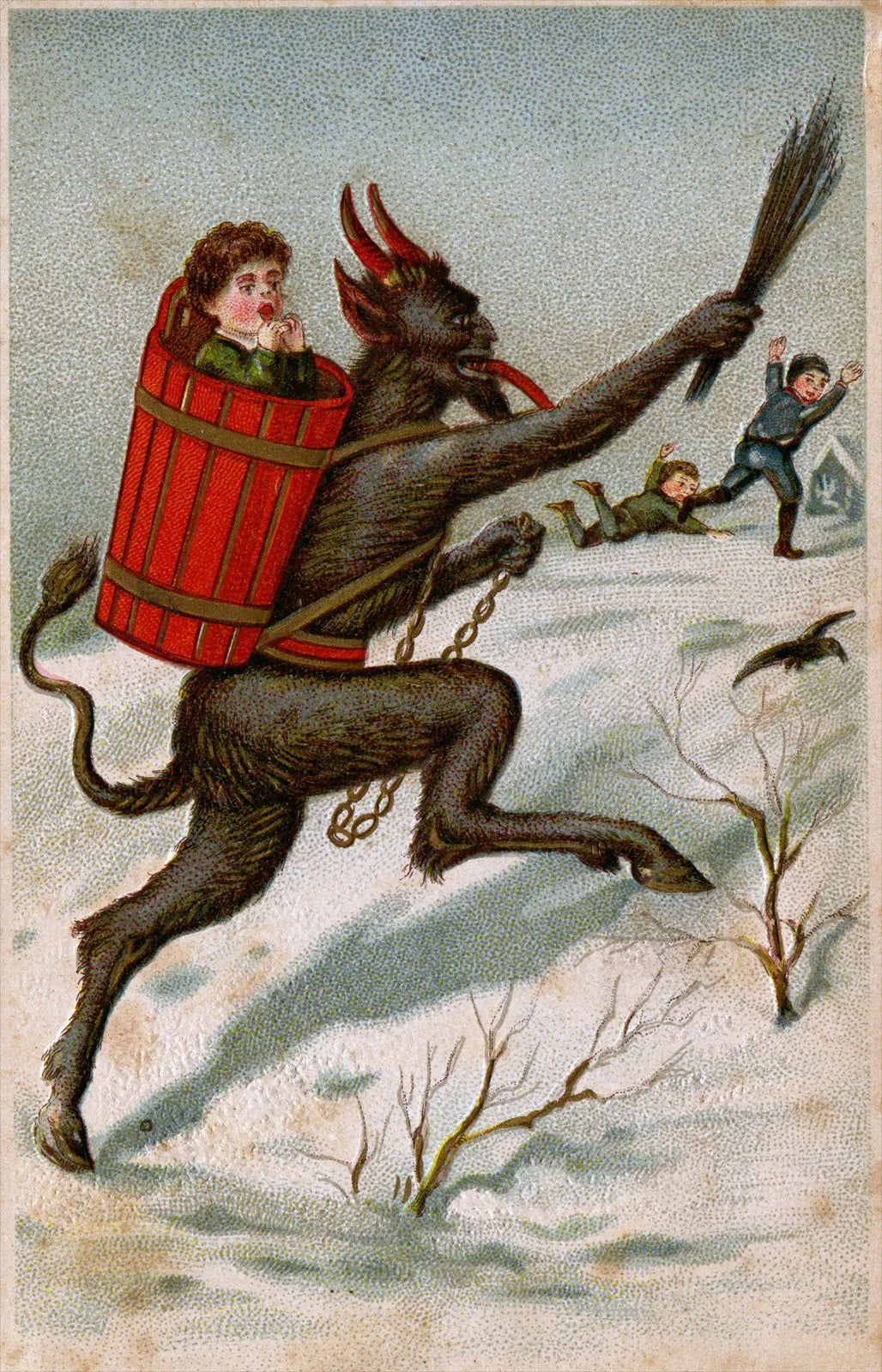
On Kampusnacht, the eve of the Christmas devil, a brown demon appears. Clip clopping down the street with cloven hooves, clashing chains and frightening bells. Depending on how bad you've been it would be a blessing to receive a swat with his branches and a lump of coal. If you've been a particularly rotten child you could be stolen away, put into the sack on his back, where immense horrors await you.
But who is the Krampus? A horned horror who makes an appearance during the Holidays each year. Krampus is a notable figure in Alpine folklore who scares misbehaved children during Christmas. He is the Yin to Saint Nicholas Yang, the stories of him haunt the halls of households in order to scare children into being good during the season. Like many myths and legends, the true origin of Krampus is unknown, but he's celebrated all over the world, most recently being adopted into American pop culture. Some countries even celebrate him with monstrous parades in early December, where local people dress up in hideous horned costumes representing the Christmas devil and clash around covered in bells, thrashing chains, carrying switches and bags.
While his official roots are unknown, it is believed that his origins stretch back to pre-Christian Alpine traditions dating back to the 6th or 7th century CE. He's typically described as a hairy black or brown beast with cloven hooves and horns like a goat. It is said that he works alongside St Nick, who concerns himself only with good children, bringing them gifts and joy. Krampus appears with a sack or basket to take away bad children to punish them for their misdeeds by eating, drowning them or taking them to Hell.
At OmniFeral we celebrate myths, legends and lore all over the world and encourage our visitors to research the rich creatures with fascinating history that helped shape the stories that we enjoy today. The Krampus being one such creature, that even modern audiences have grown to love through celebrations in modern media or even through holiday party themes each year.

